Outdoor play and creative development
- Outdoors,
- Mark Making,
- Creative
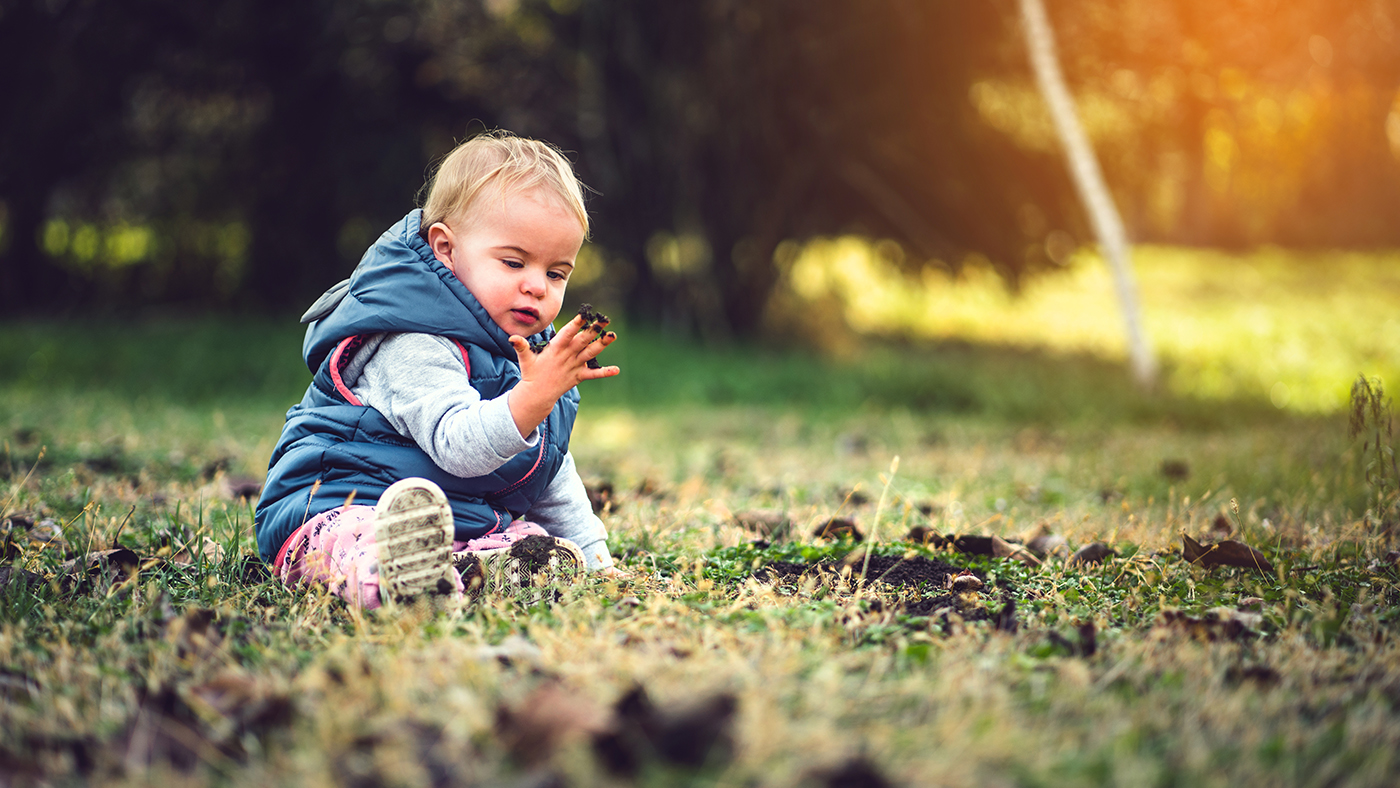
The great outdoors is one of the best resources for developing creative play in young children. There are many areas outdoors that can be explored with your child, including your very own back garden!
Creative play underpins many aspects of early learning and crosses over into many of our streams of development here at My First Five Years. Encouraging creativity from an early age has many benefits for young children as it can encourage confidence and help children develop social skills. Especially when they engage in creative play with other children [1].
Here are some outdoor creative play ideas that you could try out with your child:
Outdoor role play
Many children enjoy role play and this can begin from a very young age. Role play is a great way of building relationships and supporting your child’s confidence, as they often share this activity with others. Role play is often thought of as an indoor activity, but this can also take place outdoors.
When creating a role-play area in your own garden, try to keep this area non-descript. Adding plain items can encourage more creative and critical thinking from your child, as these items are more interchangeable and your child can change their mind about what the role play area is as they go along. For example, a kitchen set outdoors is likely to stay as a kitchen set in your child’s mind, but a set of crates, palettes and tarpaulin can be whatever your child chooses – one day it can be a space station, the next a royal castle!
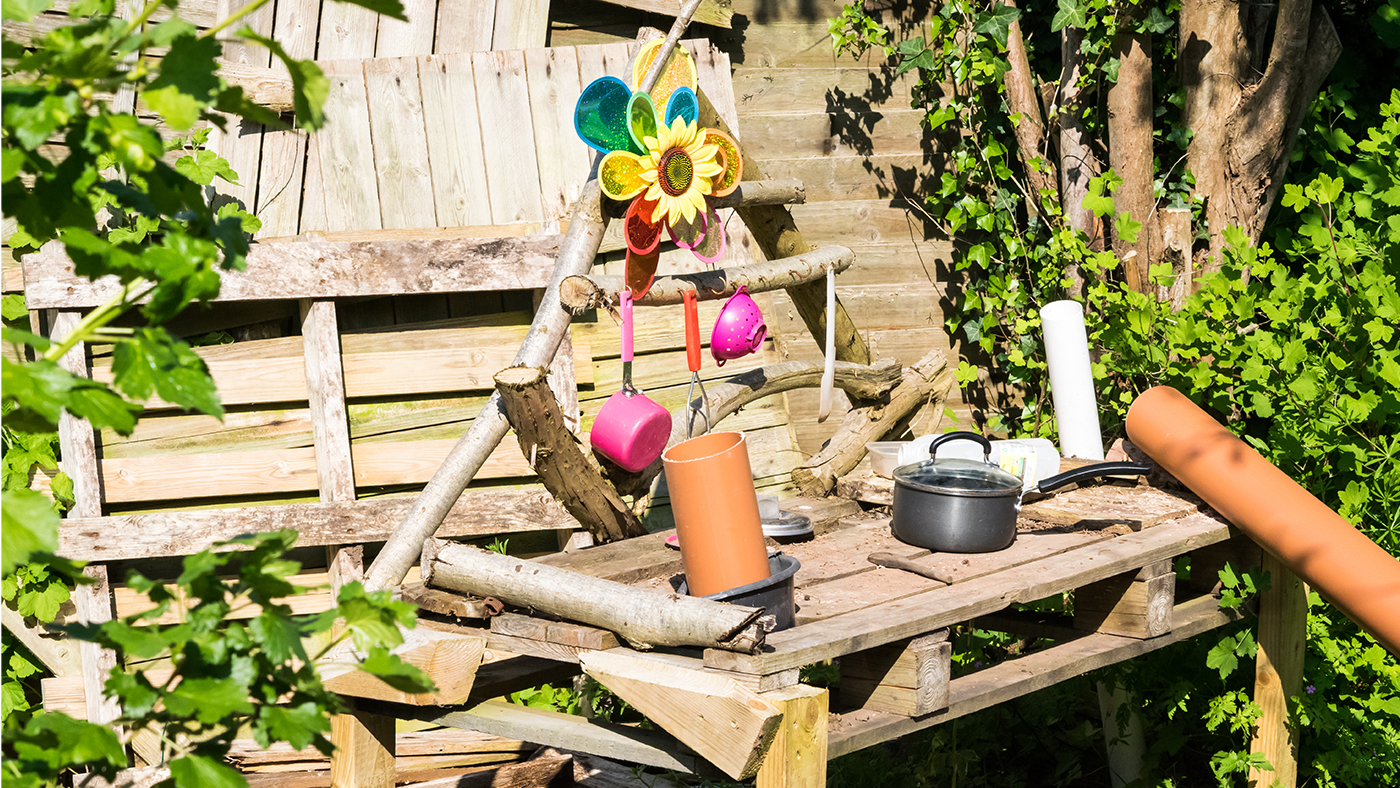
Problem solving
Like, role-play activities, problem solving crosses over into multiple streams of learning. This includes cognitive development as children can often rely on prior knowledge to help themselves find solutions.
There are many ways that you can introduce problem solving into outdoor play. This can be something as simple as working together to move water or materials from one container to another or constructing together using outdoor materials or blocks.
From this, your child could even create their own problem-solving activities for you to take part in!
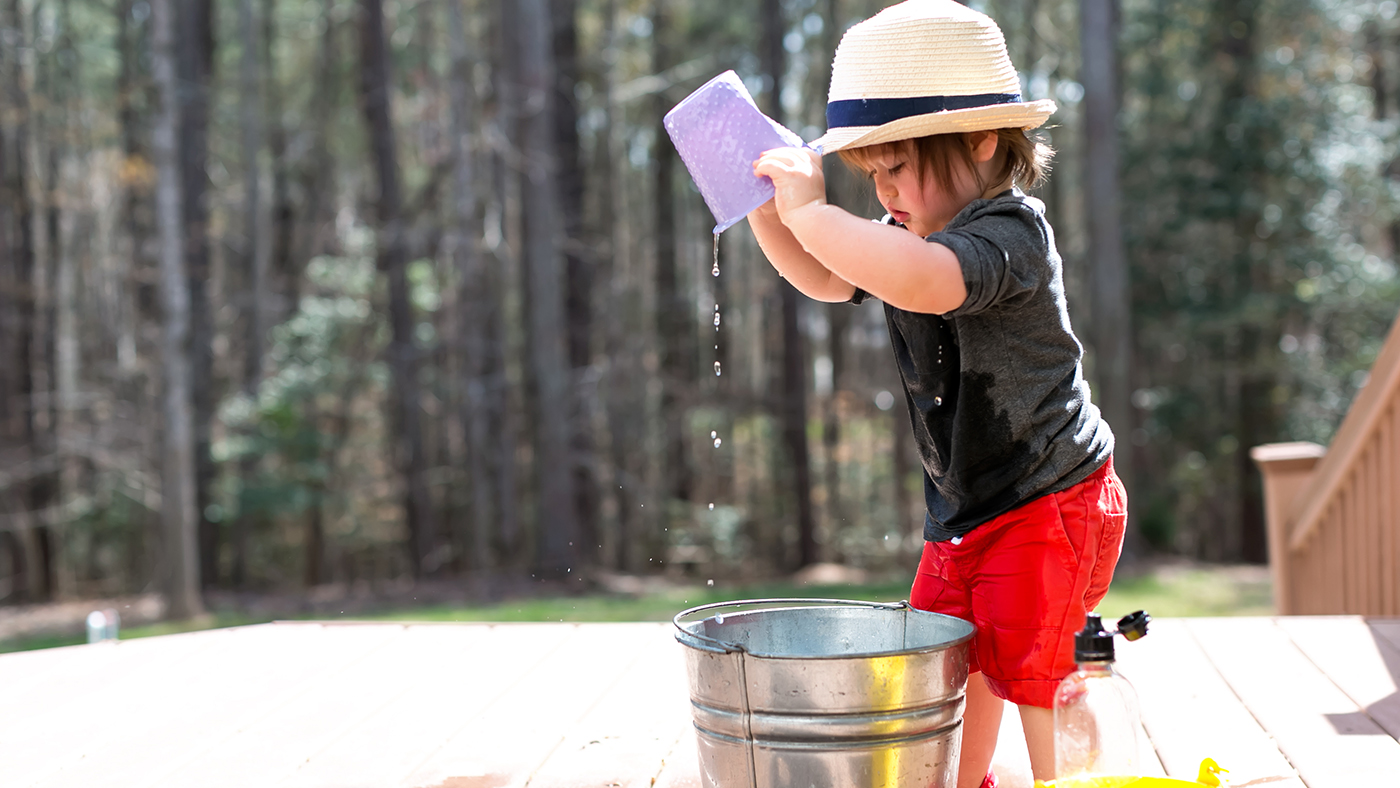
Transient art
Transient art is a great opportunity for your child to be creative. Transient art means making a design out of loose, found pieces. This is often done outdoors, and there are plenty of resources that can be found outside to help you and your child create wonderful pieces of art.
When making transient art, your child has the chance to experiment with size, shape, positions and textures. As well as supporting creative development, transient art supports fine motor skills as your child will move and handle objects of a variety of shapes and sizes, as well as providing a rich sensory experience. [2]
Transient art is designed to be left in place, and together you can your child could observe the changes that naturally happen to your art work – for example, the outdoor elements such as wind and rain or creatures such as squirrels could alter the art dramatically!
Den building
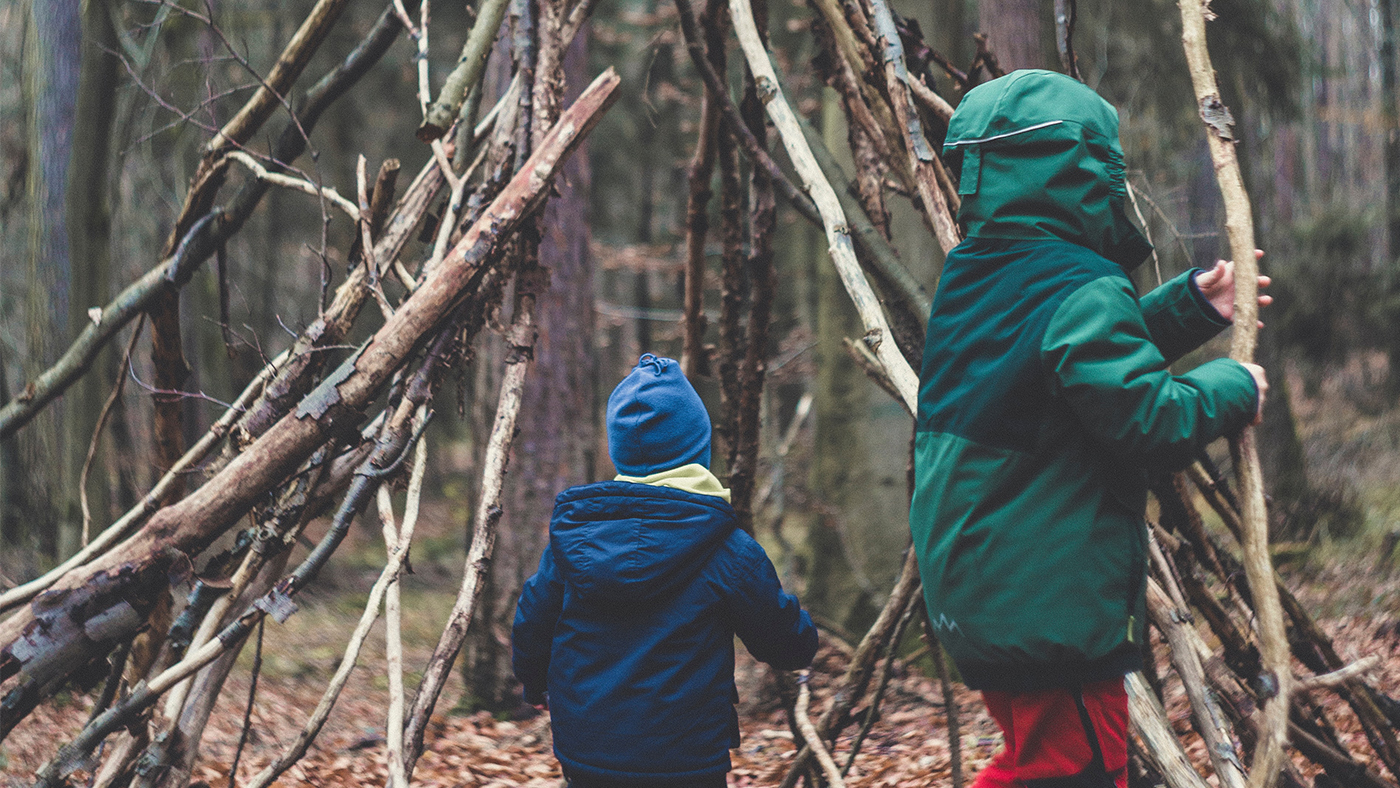
Den building is an activity that many children enjoy engaging in. Not only does den building encourage creative thinking it can also support gross motor skills. When your child builds dens, they will be using their bodies and strength to lift, stretch, move and carry, as well as push and pull materials.
Den building is a great open-ended activity that only needs a handful of materials. Things like blocks, creates, palettes and tarpaulin are great materials for den building. On a sunny day, you could even use old blankets and bedding!
As well as being an activity in itself, den building can also lead to other activities – it can set the ball rolling for role play activities, or you could even use it as a cosy spot to share favourite stories outside.
Found objects collages and junk modelling
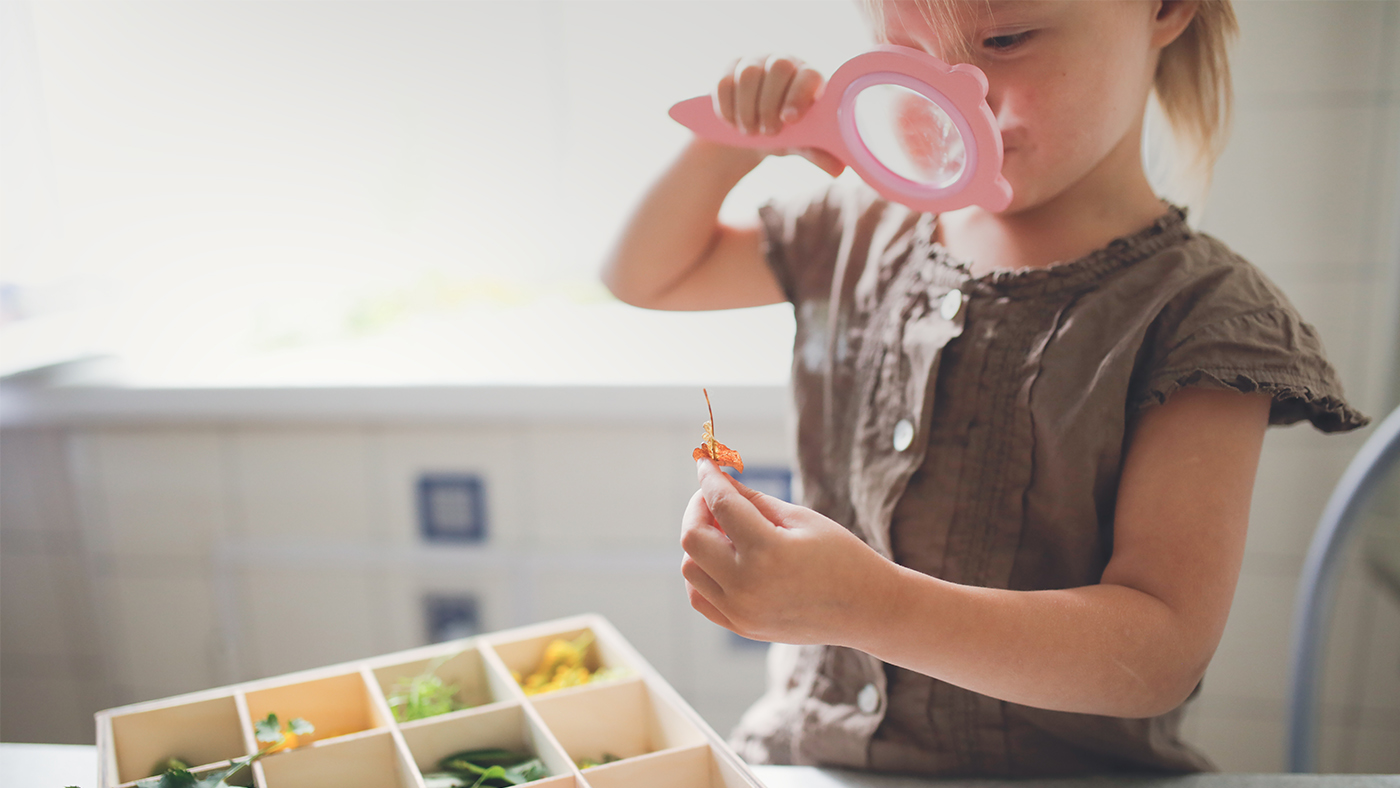
As previously mentioned, the outdoors is full of great art resources. Found objects can be collected by your child to make their own collages. Objects such as leaves, pebbles, petals and twigs are great for creating collages and even for adding onto junk modelling creations.
Using found and natural objects for these activities allows your child to be a little more creative and enables them to explore new ideas. They may also start to use these objects for certain purposes, for example replicating a colour or texture that they want to include in their finished piece.
Retelling stories
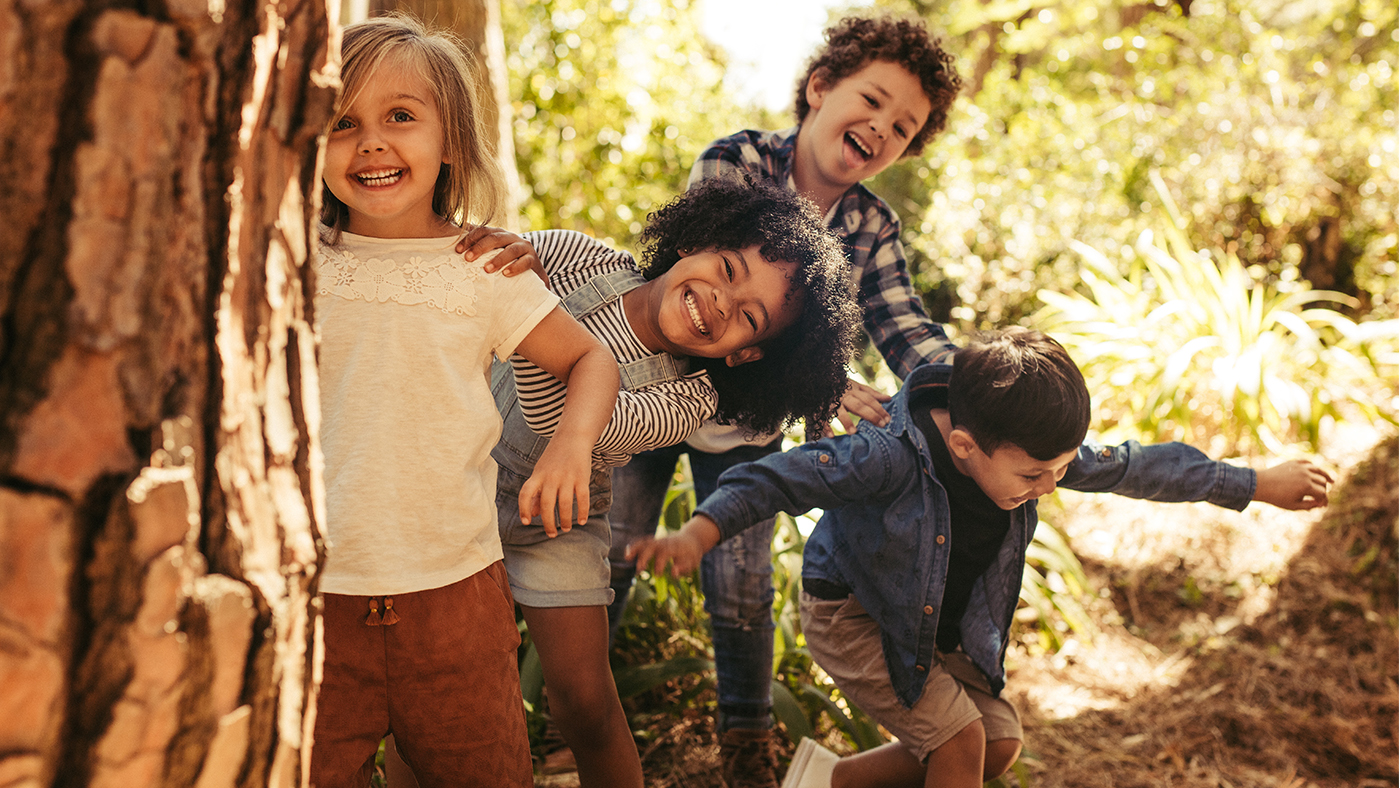
The outdoors is often a setting for favourite children’s stories. In order to help your child explore characters, settings and aspects of stories, retelling them together can be a fun outdoor activity. Retelling stories is another stepping stone for role play – it may encourage your child to start their own pretend play games based on the characters that they know and love.
A great story to retell outside is We’re Going On a Bear Hunt by Michael Rosen. This story takes place across many different outdoor areas. When retelling this story outside, you could walk together, telling the story and replicating the movements that the characters make – this could be ‘squelch-squerching’ through ‘mud’ or doing a ‘swishy-swashy’ walk through grass!
As well as exploring movement (supporting gross motor skills), retelling stories like this also helps cognitive development, as your child may begin to make links between stories and their outdoor environment, and they will remember and repeat aspects of the story of their own accord.
Outdoor mark making and drawing
There are plenty of opportunities for mark making in the great outdoors. Mark making, especially on a large scale, supports both fine and gross motor development. Your child will make small movements with their hands and wrists when using small tools and also larger full body movements where they pivot from their shoulders in order to make marks.
Have fun and get creative with making marks outside. For example, you could look for sticks to draw in the mud, large paint brushes and water to draw patterns onto a dry wall or even use your hands and fingers if you don’t mind getting messy!
As well as muddy mark making, concreate surfaces are great to use for mark making. For instance, you could use chalks to draw around shadows, or even to draw out your own shapes and paths on the ground.
Your child may enjoy drawing what they observe outside. This could be going looking for different animals or plants and drawing them, taking a clipboard and paper with you, planning out ideas or making signage to support their outdoor role play. There are so many creative and mark making opportunities to be had outdoors.
References
[1] Durham University. (2021). Durham Commision on Creativity and Education Report. Available: https://www.dur.ac.uk/resources/creativitycommission/DurhamReport.pdf.
Early Excellence. (2020). Transient Art and Loose Parts Play. Available: https://earlyexcellence.com/latest-news/press-articles/transient-art-and-loose-parts-play/
